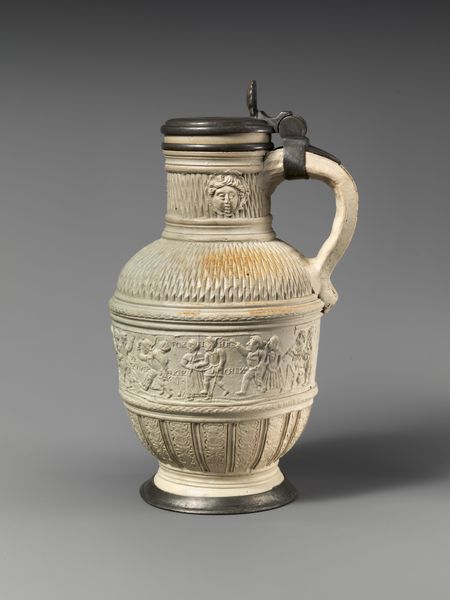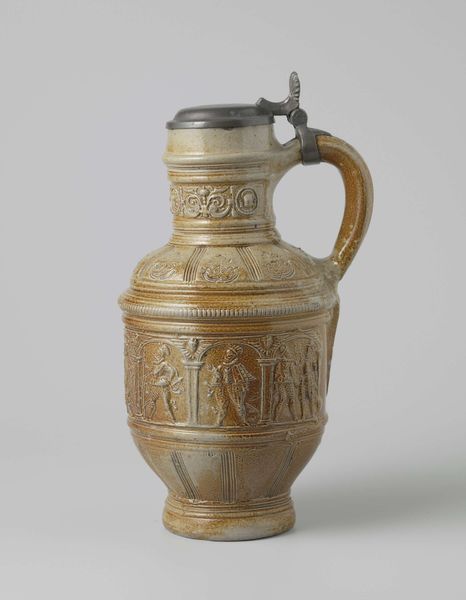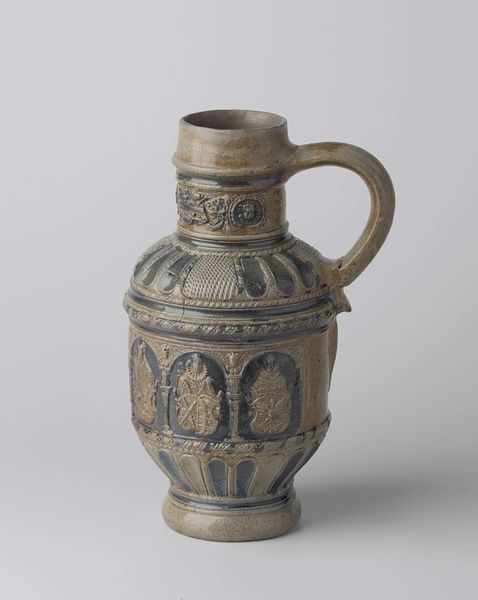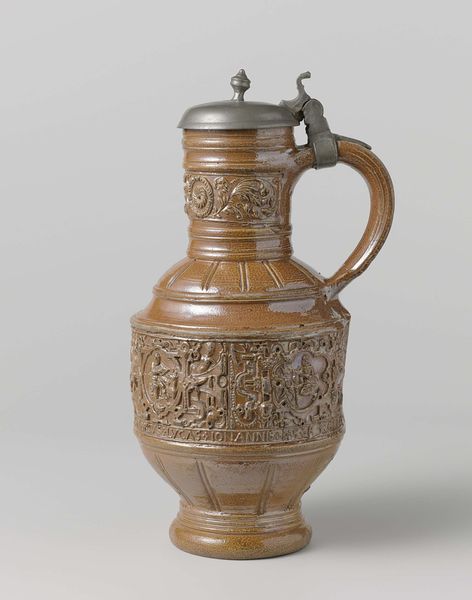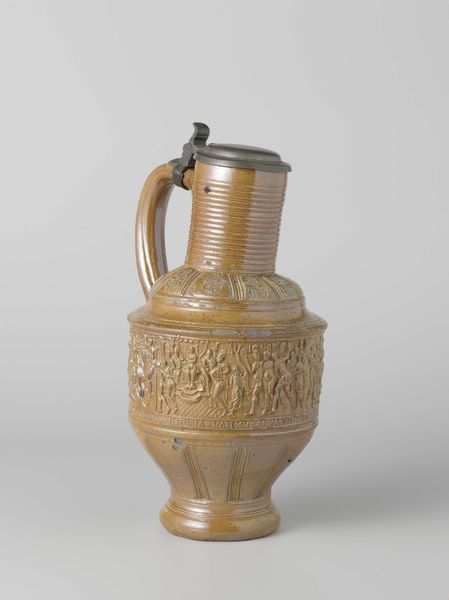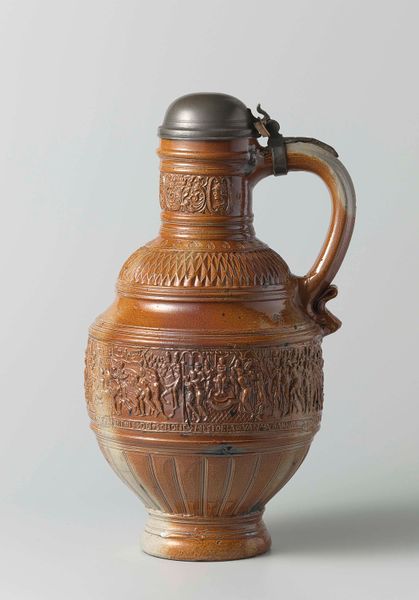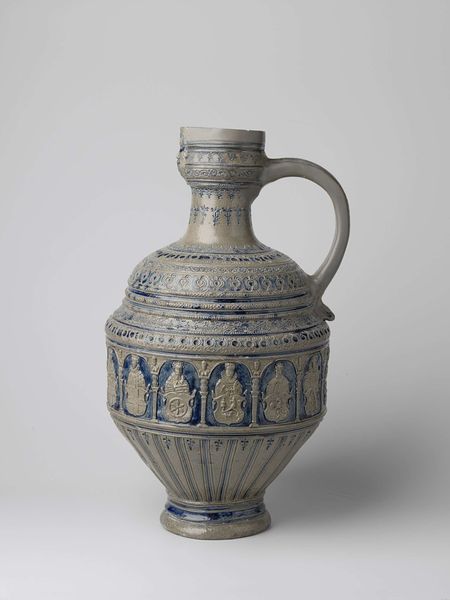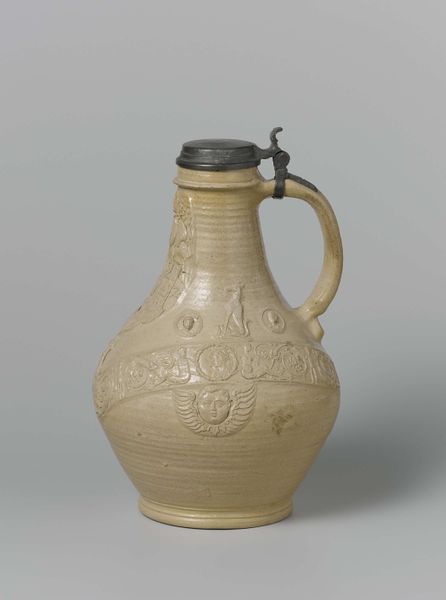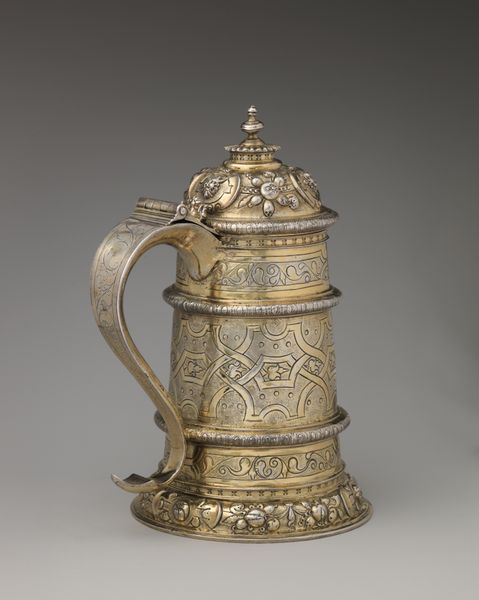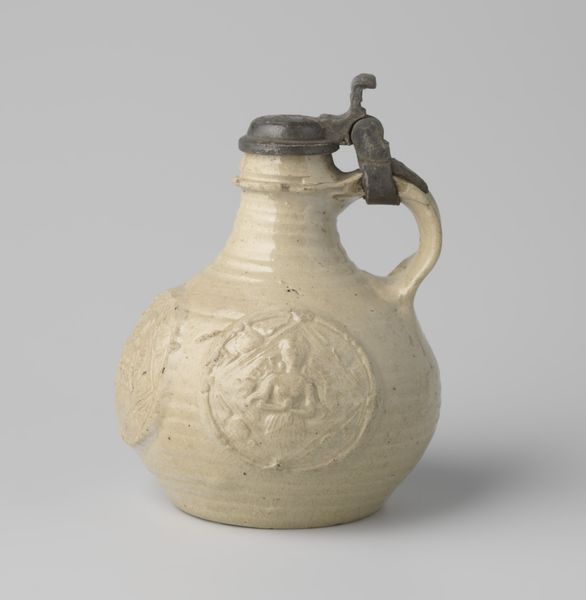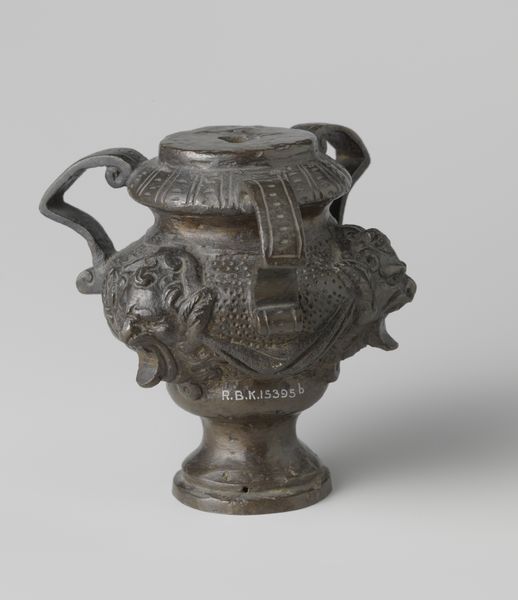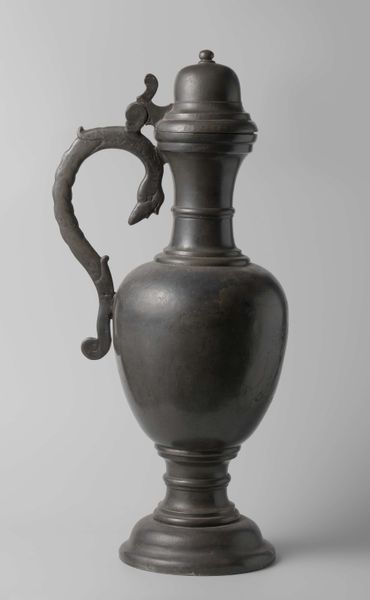
ceramic, earthenware
#
ceramic
#
earthenware
#
stoneware
#
ceramic
#
decorative-art
Dimensions: height 27.4 cm, height 25.1 cm, diameter 7 cm, diameter 14.1 cm, diameter 8.6 cm, width 16.3 cm
Copyright: Rijks Museum: Open Domain
Editor: This is an earthenware jug made sometime between 1860 and 1880. I’m immediately struck by the heraldic symbols. What can you tell me about their significance? Curator: The jug is more than just a container; it’s a tapestry of symbolic assertions. Notice the coats of arms, meticulously rendered. The arms of Amsterdam with its three crosses, and the arms of Saxony, rich with historical connotations. It's a deliberate display, linking the object, and presumably its owner, to particular lineages and locales. The hybrid beast -- a lion with eagle’s wings, for example. What do you make of that visual construction? Editor: Well, it's unexpected…a chimera of strength and freedom? But why put them together? Curator: Exactly! The choice isn't arbitrary. It signifies the aspirations and associations of the commissioner, designed to communicate power through recognizable emblems, evoking a sense of inherited legitimacy. Such objects, often commissioned or gifted, weren’t simply decorative, they reinforced social bonds. How might its use within a domestic sphere add to this interpretation? Editor: I guess displaying it showed off the family’s connections. So the jug becomes a sort of conversation piece… a boast, almost? Curator: Precisely. Objects like these served as a script for constructing identity and articulating social standing in the Victorian era. Now, knowing that, how does it affect your understanding of what appears at first glance a rather humble ceramic jug? Editor: It completely reframes it. What looks like a simple, even folksy object is really a coded message about status and heritage. Thanks, I would have completely missed all those layers. Curator: My pleasure! These objects, these "pictures", still speak.
Comments
No comments
Be the first to comment and join the conversation on the ultimate creative platform.
